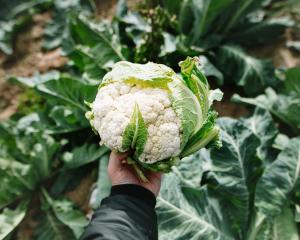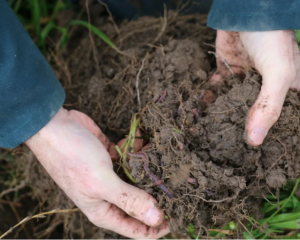Vegetables
Hedges can protect vegetable crops from wind damage but, because they need regular clipping, busy gardeners and those with small patches may prefer to use windcloth, manuka scrub or similar.
The ideal shelter hedge is no more than 1.5m tall. Keep its base compact by clipping plants hard from the earliest stages of growth and keep soil around them free of weeds.
Lonicera nitida, an evergreen honeysuckle sometimes sold as box, is suitable as a close-growing shelter hedge with small-leaved, dense growth. Propagate from cuttings taken in autumn and winter. Growing best on moderate to heavy soils, it has a root system which does not travel far into neighbouring plots.
Golden akeake or akiraho (Olearia paniculata) and Escallonia — the pink-flowered form is best — are other hedge plants suitable for the vegetable garden. They can be grown from cuttings but a head start will be achieved if two or three year-old plants are used.
Broad beans and globe or Jerusalem artichokes will give temporary shelter to protect tender crops from strong early-summer winds.
Jerusalem artichokes, shallots and garlic are among the few crops that can be planted in the open ground at this time of year. Provided the soil is not frozen or waterlogged, these hardy plants do best when planted now, coming away quickly in early spring.
Rhubarb plants that have been in the same site for several years can be broken up with a sharp spade. Replant pieces in heavily manured, deeply dug soil.
Keep autumn-sown onion seedlings free from weeds by lightly hoeing around the rows. The old practice was to apply soot to stimulate the young plants into growth when warmer weather returned. The theory was that the blackened soil surface absorbed more sunlight warmth than lighter surfaces, encouraging early growth, but this is not now recommended.
Flowers
Winter is a good time to plan next season’s flower garden. Identifying a site’s soil condition will help determine what will grow best. Shrubs suitable for seaside gardens include rosemary, ngaio (Myoporum laetum) and lilac.
For lime-free soils, try rhododendrons, azaleas, Kalmia, daphne, Erica, camellias, Pieris, magnolia, Gaultheria and hydrangeas.
For heavy, clay soils, Deutzia, firethorn (Pyracantha), Spiraea and Weigela are useful, while Tamarix and the spindle tree (Euonymus) are strong enough for windswept gardens.
Rock rose (Cistus), rosemary and many South African and Australian shrubs are suitable for dry, stony soils, and for shade or beneath trees, rhododendrons, Cistus and Viburnum are options.
Fruit
Blueberries are one of the most antioxidant-rich fruits and their popularity is increasing worldwide.
Blueberries are often unsuccessful when tried by home gardeners, mainly because they will not do well in heavy clay soils and hate lime. Like rhododendrons, they prefer well-drained, damp, peaty soil. The fruit ripens from mid- to late summer and the bush needs to be picked over several times as not all the fruit ripens at once.










